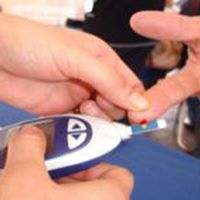Article
Diabetes: Influence of Supermarket Access, Neighborhood Walkability, and Poverty
Author(s):
As healthcare professionals are well aware, more than 9% of Americans have diabetes, and most have type 2 diabetes.

As healthcare professionals are well aware, more than 9% of Americans have diabetes, and most have type 2 diabetes.
Additionally, an estimated 37% of the US population older than 20 years has prediabetes. But, time and again, researchers have attested to the fact healthy lifestyle modifications can prevent prediabetes from progressing and control type 2 diabetes. In fact, modest weight loss — 5% to 10% of total body weight – has been demonstrated to prevent diabetes more effectively than medication.
Authors of a recently published study examined the association between home neighborhood environment and diabetes risk in an employed, healthy population. The study included 15,522 individuals who attended on-site health fairs in a midwestern health system for four consecutive years.
At the health fairs, individuals reported weight, height, birth date, gender, zip code, and workplace. The researchers measured capillary blood glucose, total cholesterol, and HDL cholesterol and used participants’ zip codes as a proxy for home neighborhood.
The authors linked the zip code to the American Community Survey; this provided information about the percentage of the population in the zip code that was African American and below the federal poverty line.
A similar method was used to calculate the food environment.
Researchers also used the zip code to find the neighborhood Walk Score (a measurement of neighborhood walkability, with higher numbers indicating services more easily accessed by walking).
After conducting statistical analyses, the authors determined that employees with high risk for diabetes were older, and had higher BMI (33.7 vs. 28.1 kg/m2) systolic blood pressure (130.7 vs. 118.3 mmHg), and non-HDL-C (148.6 vs. 130.2 mg/dL) than those without high risk for diabetes.
Additionally, employees with high risk for diabetes were found to live in zip codes with a higher walk score. Their neighborhoods appeared to have a higher percentage of homes below the FPL, and a higher percentage of African Americans.
The authors concluded their analyses highlighted the relationship between income and diabetes risk. They attributed the surprising link between higher walk scores and diabetes risk to the presence of convenience stores, fast food restaurants, etc., which carry unhealthy foods. They did acknowledge their study findings were limited because of its predominantly female population and a population that was motivated to attend their employer’s health screening.




